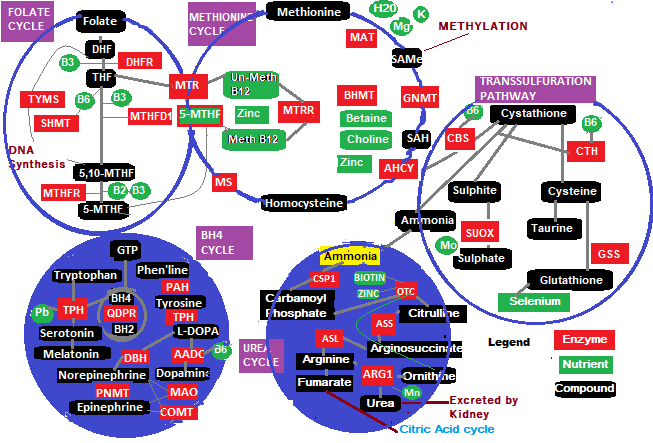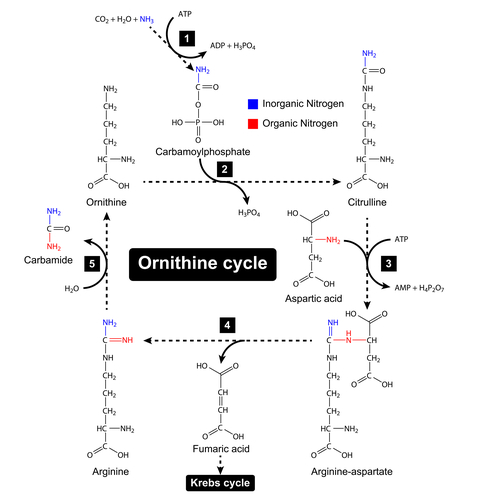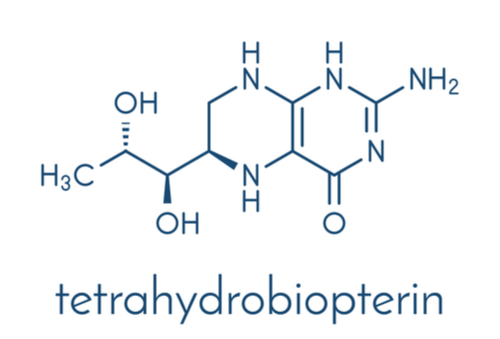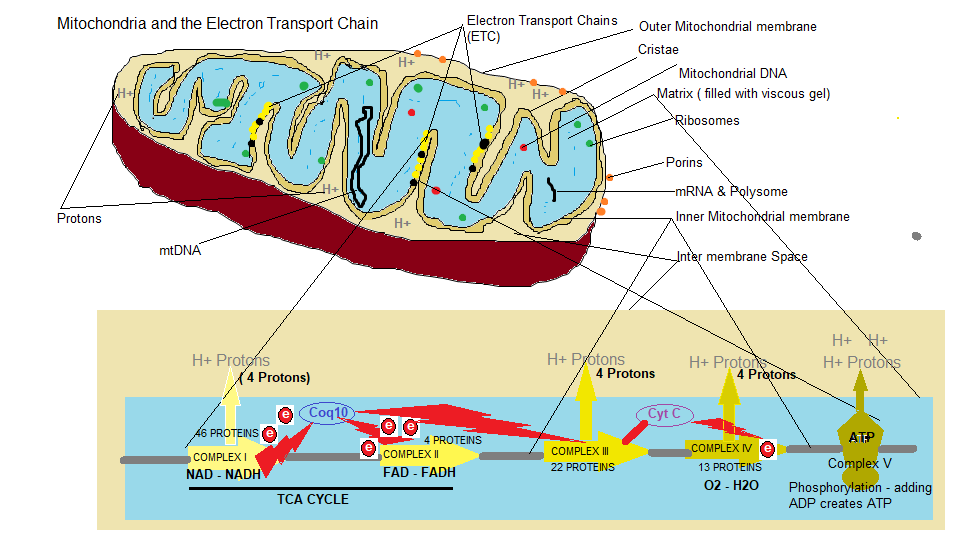Introduction
In the previous article we discussed the Methylation cycles Folate,Methionine and Transsulfuration. Methylation is the body’s master physiological systemic process that applies the 90 essential nutrients to where they are needed in order to function as a self healing, self regulating organism whose default state is health not disease. The ‘fairy story is that only the current global ‘healthcare’ system wants everybody to think that our body’s default state is ill health because today’s human is a biological defect, so their attention is to chase after disease instead of concentrating on maintaining health. Since we are all potentially defective, then there’s this great need to create prescription drugs that will fix the defects. We have all been this way since time immemorial, which is why everybody died younger a century ago, and it’s only modern medicine’s high tech equipment and advanced knowledge of the human anatomy and its multiplicity of biological processes that is making us live longer today. Extensive medical studies have uncovered a plethora of defective mutant genes that is causing the defects, so medical science is making greats strides in creating chemicals to somehow inhibit the expression of these genes and block downstream processes that are causing the disease states in millions of people. We can be fortunate that we have this ‘parachute system’ that saves us when we continue to eat what we want, when we like and in great quantities. We even have further safety measures to protect us by way of quackzenes to help our defective bodies. So our great modern society is working for us, despite the untold suffering, misery and death that is going on in the background. The natural methylation process is no different, since medical science has uncovered many genes involved, that express a plethora of enzymes that accomplish the task of methylation, as being mutant. These transcriptional errors in gene expression are referred to as SNPS ( Snips) or Single nucleotide polymorphisms which apparently are quite common and many doctors encourage you to have your genes tested ( and possibly your head tested..lol) to see what genes you have that are affected. Ben Lynch in his book refers to them as ‘Dirty genes’. Before we explore this subject in more detail in the next article, let us complete our discussion on methylation and overview the remaining cycles as outlined in blue background in the diagram below:

The Urea Cycle

Steps 1 and 2
The whole purpose of this cycle is to convert Ammonia, a toxic by product from the transsulfuration cycle as a result from the catabolism of amino acids, to Urea that can be easily excreted by the kidneys. This cycle primarily takes place in the body’s main detox organ, the liver, and urea is transported into the bloodstream and then into the kidneys for excretion. This conversion from ammonia to urea is a 5 step process, the first 2 occur in the mitochondria and the last 3 in the cytosol. Once the ammonia ‘exhaust’ that is produced in the transsulfuration cycle is delivered to the urea cycle for excretion, a urea cycle enzyme CSP1 ( Carbamoyl Phosphate synthetase ) converts the ammonia into carbamoyl phosphate (step 1). This conversion involves amino acid glutamine ( non essential, unless the body is under stress, when it needs more from the diet that should include meat,seafood,fish,milk,nuts,eggs,cabbage,beans) and phosphorylated bicarbonate. The second step takes carbamoyl phosphate and ornithine ( this is a non proteinogenic amino acid meaning it is not part of the 22 amino acids used by the translational ‘machinery’ in DNA mechanisms) which are both catalyzed by an enzyme OTC (Ornithine transcarbamylase) that produces a compound Citrulline ( another non coded amino acid). OTC requires nutrients Biotin (dietary sources Liver, egg yolk, yeast, nuts and seeds, salmon, dairy, avocados) and Zinc (dietary sources oysters, red meat, poultry, beans,nuts, crab. Lobster, dairy, grains) to work.
Steps 3-5 I
The third step that occurs in the cellular cytosol takes citrulline and aspartate ( a non essential amino proteinogenic acid) are then catalyzed by an enzyme ASS (Argininosuccinate synthase ) to produce Argininosuccinate ( another non proteinogenic amino acid). Enzyme ASL (argininosuccinate lyase ) reacts with these 2 compounds to produce Arginine ( one of the essential amino acids, although depending on the individual, if healthy it can be produced from the enzyme ASL. For birds, who do not have a urea cycle, Arginine is essential to break down ammonia. For cats and dogs, after a high protein meal, sufficient arginine is essential to break down ammonia produced by protein metabolism into excretable urea otherwise ammonia toxicity could be fatal ) and Fumarate. The fumarate acid can be delivered to the citric acid cycle ( also known as the TCA or Krebs cycle that we discussed in the article ‘nutrients required for cellular energy production’), as an intermediate compound.
Other toxic products that occur in the mitochondria
If you take a glance at the mitochondrion/ETC diagram below, the end stage (Complex V) is where oxidative phosphorylation occurs and ADP converts ATP molecules, producing the final energy product that is shipped to the cytosol. Dr Lee know ND, informs us, that between 0.4-4% of the total oxygen consumed becomes Superoxide free radicals which has to be converted to a less toxic substance Hydrogen Peroxide (H202) using an enzyme Superoxide dismutase. The hydrogen peroxide which is also toxic to the mitochondria, is then converted to harmless water using Glutathione peroxidase. Nitric oxide(NO) as we have discussed, is one of three known gasotransmitters and is used as a signalling molecule, such as in the endothelium of blood vessels, to signal the surrounding tissue to relax. In the cytosol an enzyme Nitric oxide synthase (NOS) is used to synthesize NO from L-arginine which freely diffuses into the mitochondria and reacts with oxygen producing Peroxynitrite another damaging free radical. We always talk about free radicals as being bad, and they are, but in the mitochondria they do have one positive purpose.
Mitochondria’s personal DNA
Each mitochondria in the cells; and there could be hundreds or even thousands in one cell. These mitochondria are built on demand in the cell depending on the energy needs of the host; a sedentary person would not have the need for many, but an athlete would. In the diagram below I have shown one electron transport chain (ETC), but generally each mitochondria may have many ETC’s, all working as a ‘Supercomplex’, so it is conceivable that one of these many ETC’s may exhaust one of their individual complexes ( either I-V), in its quest to keep up with the energy requirements at any particular time. In cellular biology, in general, the DNA for each cell is in the nucleus, however, nature is smart as always, and incorporates a small subset of some 30 cells worth of DNA in each mitochondria, that is created there, only by maternal genes during embryonic development (Dad..we don’t need your genes for this part). Although, there is some genetic communication between the mitochondria DNA and the nuclear DNA, but each mitochondria can build its own basic building blocks. So if there is a need to build another complex of an ETC it can do it faster than having to rely on the nuclear DNA, and this is where the free radicals come into play. In order for the cell to know if the free radical production is caused by a low energy demand or cellular oxygen starvation, or a need to build more complex(s) to meet the demand, the cell senses the ATP levels at complex V. In the example given by Dr Know there is a requirement to build more complex IV’s, which the cell can sense from falling ATP levels at complex V, since Complex IV is ‘running on empty’ as it were. On the other hand, if ATP levels were high which caused the free radical production, then it is possible that the proton gradient needs to be dissipated. This means energy dissipation, by uncoupling the proton gradient, which in effect, disconnects electron flow from ATP production, by using what Dr Know refers to as overflow channels, allowing energy storage along the proton gradient to build up as heat, as opposed to energy, resulting in less free radical production. This can be achieved if there is enough brown adipose tissue which warms the host. Brown adipose tissue can be increased within the host by regular exposure to cold temperatures which is easy if you live in northern climates, and you get out everyday and walk or jog. As I eluded before, the body is always primed to move, so you must move your body on a regular basis and this is why it is essential to exercise regularly especially in cold weather.
Fumaric acid naturally produced on the skin: Psoriasis A case study


It is of curious interest here that Fumaric acid is produced on the skin during sun exposure and like any intelligent response it is probably to protect the skin from burning. The ignorance of conventional medicine have used a synthetic form of fumaric acid since 1959 to treat psoriasis instead of healing the underlying cause which is in the gut. One particular case involved a 49 year old man with psoriasis who was treated with PUVA ( Photochemotherapy using UVA, the longer wavelength UV light that can damage and penetrate the skin and should be avoided from natural sunlight as much as possible), sun exposure ( probably more UVA…just to make sure we ‘fry’ the skin…lol). Then he was prescribed methotrexate ( this poisonous drug carries a warning : DEATHS HAVE BEEN REPORTED WITH THE USE OF METHOTREXATE IN THE TREATMENT OF MALIGNANCY, PSORIASIS, AND RHEUMATOID ARTHRITIS. PATIENTS SHOULD BE CLOSELY MONITORED FOR BONE MARROW, LIVER, LUNG AND KIDNEY TOXICITIES. These are the possible side effects pertaining to the skin: Erythematous rashes, pruritus, urticaria, photosensitivity, pigmentary changes, alopecia, ecchymosis, telangiectasia, acne, furunculosis, erythema multiforme, toxic epidermal necrolysis, Stevens-Johnson Syndrome, skin necrosis, skin ulceration, and exfoliative dermatitis.). To make sure this man was completely defenceless ‘Cyclosporine’ an immunosuppressant was administered. Finally, they gave him a 6 week dose of synthetic fumaric acid ester (brand name Fumaderm). However, its active ingredient, Dimethyl Fumarate, raises a risk of Progressive Multifocal Leukoencephalopathy or PML ( a rare but fatal viral condition that causes damage and inflammation of the white matter in the brain (which is were the central nervous system control is located). PML almost exclusively occurs in patients that are in an immunosuppressant state, receiving chemotherapy, and have autoimmune conditions such as PSORIASIS. Wonderful, this man satisfied all exclusive criteria so he wins the grand prize of the highest risk of contracting PML.
Wait a minute….think about this…this man is suffering from Psoriasis, where a confused immune system is attacking his skin cells from inside the body, so they apply a very damaging UVA source of chemotherapy and sun exposure to the outside of the body. The sun exposure was the most healthier of the treatments he received, providing it was not when the UVA wavelength is at its strongest (Before 10am and after 3pm). UVA has a wavelength of 300-400 nanometres (UVB that allows us to produce Vitamin D3 precursor at 290-320 nm), but UVA is damaging to the skin and it will penetrate and damage the lower layers of the skin. Then they give him Methotrexate a drug that can screw up the folate cycle of methylation, and side effects include photosensitivity ( the need to avoid skin exposure to sunlight), erythema multiforme (Stevens-Johnson syndrome) defined to be a serious systemic allergic reaction involving the skin and mucous membranes, so why would they prescribe such a drug risking even more skin issues?. Then to make sure he really was in trouble they turned off his immune system. The reasoning behind this; of course his physicians knew that the immune system was the focal point of his Psoriasis so they just simply suppressed it, instead of fixing it by fixing the dysbiotic gut. This is really a prime example of the inmates taking over the asylum.
I suppose the people involved with this mans treatment wondered why he developed squamous cell carcinoma, and then probably concluded that it must have been the sun exposure, and I suspect he possibly died. Don’t worry readers, I had to look up Progressive Multifocal Leukoencephalopathy as well…really is this what is taught in pharmacology classes in medical school to experiment with poisonous drugs..BE WARNED !!..keep well away from these purveyors in sorcery and witchcraft, if you want to keep your head on your shoulders.
Steps 3-5 II
To conclude our discussion on the Urea cycle enzyme ARG1 (Arginase), catalyzes Arginine using H20 as a hydrolysing media with the enzymes cofactor Manganese to produce the final excretable product UREA. Ornithine is also produced to dispose of the excess nitrogen that accumulates from the various catalyzing steps of ammonia and aspartate, while ornithine is recycled. Ornithine supplementation is used to facilitate exercise to reduce fatigue by increasing energy consumption and promoting ammonia excretion. Interestingly, ARG, is coexpressed with Nitric oxide synthase in smooth muscle tissue such as in the genitals of men and women, where Nitric oxide synthase induces rapid relaxation and facilitates tissue engorgement necessary for sexual response. This is evident since Arginine is a precursor to Nitric oxide, and an imbalance between nitric oxide and arginine may cause erectile dysfunction. This is because of the substrate competitive issue, but long term arginine supplementation has not been proven to fix erectile dysfunction, but possibly cleaning the blood. and the circulatory system, and not eating nutrient deficient food will go a long way in fixing the problem.
The BH4 cycle

BH4 is an acronym for Tetrahydrobiopterin (Sapropterin), a compound that we discussed in the previous article as being a crucial cofactor for eNOS(endothelial Nitric Oxide synthase) enzyme to synthesise Nitric oxide, in fact BH4 is a vital cofactor for many enzymes including those that manufacture key neurotransmitters such as Serotonin, Dopamine and epinephrine. Just to remind the reader, all of this activity occurs within the cell so I will recall the diagram of the mitochondria where all of this activity takes place:

This cycle initiates from a compound which is one of the building blocks for RNA synthesis and is called Guanosine-5-Triphosphate (GTP). A mitochondrial matrix enzyme called Succinyl-CoA ligase (SUCLG2) that activates within the citric acid cycle catalyzes the conversion of Succinyl-CoA ( another intermediate from the citric acid cycle). As I mentioned before, the citric acid cycle is the same thing as the TCA cycle shown in the diagram above) to succinate and Acetoacetyl CoA ( this is the precursor of HMG-CoA in the mevalonate pathway essential in producing cholesterol and what statin drugs slow down). Within a 3 step process using 3 enzymes, GTP becomes BH4. BH4 cofactors Tryptophan hydroxylase ( TPH ), in addition to Iron (Pb) that converts tryptophan into serotonin. Phenylalanine hydroxylase (PAH), converts phenylalanine into tyrosine, and then using TPH, it converts it into Dopamine. Dopamine, Norepinephrine (noradrenaline), and Epinephrine (adrenaline)’s from their precursor molecule L-DOPA ( also known as Levodopa, which incidentally modern medicine use to ‘band-aid Parkinson’s conditions, and as you guessed it, it is obviously not a cure but a temporary ‘feel better’ substance). Once L-DOPA enters the central and Peripheral nervous systems, it is converted into Dopamine by Aromatic L-Amino acid Decarboxylase (AADC), which also uses a cofactor nutrient Pyridoxal or Vitamin B6. Dopamine beta Hydroxylase (DBH) converts L-DOPA into norepinephrine, while Phenylethanolamine-N-methyltransferase (PNMT) converts norepinephrine into epinephrine and Monoamine oxidase (MAO) and Catechol-o-methyltransferase (COMT) metabolises both these neurotransmitters as shown in the diagram. BH2 is a free radical and is the oxidised form of BH4, so BH2 needs to be recycled into a useable form back to BH4. The enzyme that provides this conversion is QDPR (quinoid dihydropteridine reductase) enzyme.
Conclusions
Now we have taken a cursory look into the methylation cycles and some of the 200 or so enzymes involved in this systemic application of continual adjustment and adaptation of our bodys on a daily basis throughout our lives. So everyday we can affect these multiple physiological adaptations both negatively and/or positively based on our life choices. It is abundantly clear that, since we have identified crucial nutrients required for this master process, being deficient in any, can affect these cycles which in turn will cause a negative outcome which generally is a gradual process dependant upon the gravity of deficiency and/or toxicity. Since the human genome project, scientists have discovered, what some have documented back in the 50’s, that we are biochemically, individuals, where organ sizes and positioning in the body are not exactly the same. This is also true with genes, and when cells are replaced there are slight differences in the nucleotides expressed in parts of the DNA. We mentioned these at the beginning of this article, what scientists referred to as SNPS ( Snips) or Single nucleotide polymorphisms, which are transcriptional errors in gene expression. Some affect protein construction and some do not, since their location within the DNA strand is not part of a coding sequence. Unfortunately, some physicians, including naturopaths, are using these anomalies to worry people into testing their own genes for these transcriptional errors and if any are found, sell their consultancy services to advise how these errors can be fixed and explain what horrors can occur if they don’t..remember, if you have read them..my articles on ‘Selling sickness’. Here is a link to part 1:
https://www.extremehealthacademy.com/selling-sickness-part-1-conventional-medicine-is-a-business/
In the next article we will discuss this issue of SNPS and how they may or may not affect the methylation cycle.
Check out other Articles in this series:
Nutrients in Food and their bodily purpose I (Phenols)
Nutrients in Food and their bodily purpose II (Lignans, Triterpenes, Phytosterols, Carotenoids & Fats)
Nutrients in Food and their bodily purpose III (Phenolic acids, sulphur, sulphides,sulphoxides )
Nutrients in Food and their bodily purpose IV (Glucosinolates, Sulforaphane, Indole-3-Carbinol)
Nutrients in Food and their bodily purpose V (Lipid distribution, absorbed fats, Criciferous Veg)
Nutrients in Food and their bodily purpose VI (Nutrients required for Liver Detox)
Nutrients in Food and their bodily purpose VII (Seeds & the Omega Fatty Acids)
Nutrients in Food and their bodily purpose VIII (Nutrients required for cellular energy production)
Nutrients in Food and their bodily purpose IX (Water I Properties and Body fluids)
Nutrients in Food and their bodily purpose X (Water II Cellular Hydration)
Nutrients in Food and their bodily purpose XI (Water III Fluid filtration, reabsorption, excretion)
Nutrients in Food and their bodily purpose XII (Water IV Blood pressure, Blood volume regulation)
Nutrients in Food and their bodily purpose XIII (Water V Body Fluid Dysfunction
Nutrients in Food and their bodily purpose XIV (Dental Nutrients)
Nutrients in Food and their bodily purpose XV (Nutrients involved in Methylation I)
Nutrients in Food and their bodily purpose XVI (Nutrients involved in Methylation II)
Nutrients in Food and their bodily purpose XVIII (Nutrients involved in Methylation IV)
Nutrients in Food and their bodily purpose XIX (Methylation V and the Microbiota I)
Nutrients in Food and their bodily purpose XX (Methylation VI and the Microbiota II)
Nutrients in Food and their bodily purpose XXI (Superfoods: Wheatgrass)
Nutrients in Food and their bodily purpose XXII (Superfoods: Adaptogens)
Nutrients in Food and their bodily purpose XXIII (A look into our nutritional past Sir Robert McCarrison)
Nutrients in Food and their bodily purpose XXIV (Pregnancy: Nature vs Nurture vs Nutrition)
References/Acknowledgments :
- Urea cycle, CSP1 ( Carbamoyl Phosphate synthetase ), OTC (Ornithine transcarbamylase), ASS (Argininosuccinate synthase ), ASL ( argininosuccinate lyase ), Fumaric acid, Guanosine-5′-triphosphate (GTP), Biopterin Wikipedia
- Fumaric acid 2010 ScienceDirect
- Methotrexate RXList.com
- Methylation report sample Lifecode Gx
- What is Tetrahydrobiopterin and how can I make more of it? 2018 Aaron Gardner Gene food
- QDPR gene Genetics home reference
- Continuous exposure to L-Arginine induces oxidative stress and physiological tolerance in cultured endothelial cells 2012 Srinidi Mohan et al NCBI (Pubmed)
- Selling sickness: Conventional medicine is a business, article extremehealthacademy.com
- Mitochondria and the future of medicine 2018 Lee know ND
- Dirty Genes Dr Ben Lynch 2018
Author : Eric Malouin